The mystery of King Arthur’s Hall: Cornish monument is 4,000 years OLDER than we thought – but scientists still have no idea what its original purpose was
Legend has it that King Arthur and his knights ruled England more than 1,000 years ago before disappearing from history.
Now archaeologists have discovered that the mysterious site known as King Arthur’s Hall is 4,000 years older than previously thought.
King Arthur’s Hall in Bodmin, Cornwall, was once considered nothing more than a simple medieval animal pen.
However, a team of researchers have now revealed that the site actually dates back 5,500 years to the early Neolithic period.
This means that the strange stone structure could even be older than Stonehenge and predate Arthurian legend by thousands of years.
And like its more famous counterpart, scientists say the original purpose of King Arthur’s Hall remains a total mystery.
Built when the British first settled on permanent sites, the site is unlike anywhere in Britain or Europe.
Pete Herring, chairman of the Cornwall Archaeological Society, said: ‘The monument retains its mystery: there are no Neolithic parallels for a stone-lined sunken and banked rectangular enclosure.’
Archaeologists say the mysterious site known as King Arthur’s Hall (pictured) is 4,000 years older than previously thought
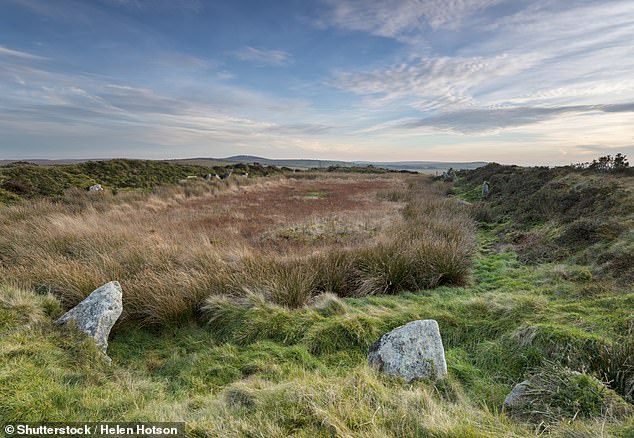
Scientists once thought the strange stone structure was nothing more than a medieval animal pen. Now scientists date the structure to the Neolithic period
The site is on the western side of Bodmin Moor, near Helston.
It consists of a large enclosure with a slope 49 meters long and 21 meters wide, covered with 56 standing stones up to a height of 1.8 meters.
The name first surfaced in 1583 when local legends began to surround the enigmatic structure, but for years scientists simply believed that the ‘hall’ was a type of medieval animal pen called a pound.
However, when research by a local volunteer group raised questions about the site’s medieval origins, Cornwall National Landscape, which manages the surrounding land, commissioned a full investigation.
Together, scientists from the Cornwall Archaeological Unit, local volunteers and experts from the Universities of Reading, St Andrews and Newcastle carefully excavated the site.
Their excavations revealed samples of pollen, insects and parasite eggs that were tested with radiocarbon dating and optically stimulated luminescence.
This showed that the original interior of the site had been excavated sometime around 3000 BC, 4000 years earlier than originally thought.
Dr. Tim Kinnaird, an archaeologist from the University of St Andrews, said the discovery of a definitive date for the hall was a ‘major revelation’.
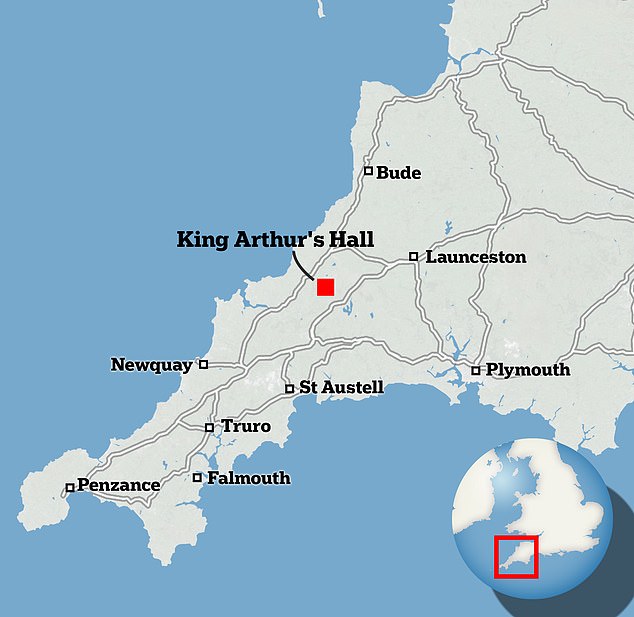
King Arthur’s Hall is located in Bodmin, Cornwall and consists of a sloping structure 49 meters long and 21 meters wide, clad with 56 standing stones to a height of 1.8 meters
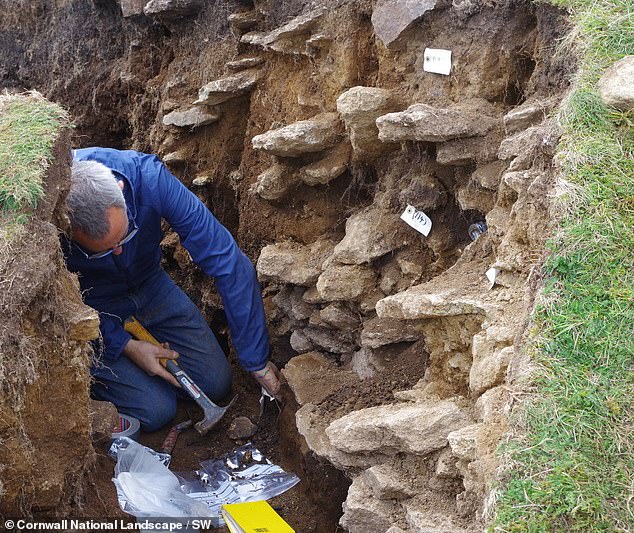
While digging into the structure, researchers discovered pollen, insects and parasite eggs dating back to 3000 B.C.
“We now need to reassess our understanding of the prehistoric landscape of Bodmin Moor,” Dr Kinnaird said.
While archaeologists may have solved the puzzle of when King Arthur’s Hall was built, this earlier date now opens up an even greater mystery.
King Arthur, if he really existed, is usually associated with the early Anglo-Saxon period in the fifth and sixth centuries.
This means that despite its royal name, the structure predates the time of King Arthur by at least 3,500 years.
In fact, the hall predates even the Bronze Age stone circles found in the Cornish countryside.
During the Neolithic period in which King Arthur’s Hall was built, people first began to settle on permanent sites and built some of the earliest stone enclosures.
Nowhere else in Britain or Europe have scientists discovered a similar bank structure lined with standing stones from this period.
That makes King Arthur’s Hall a totally unique structure for its time period, with its original use shrouded in mystery.
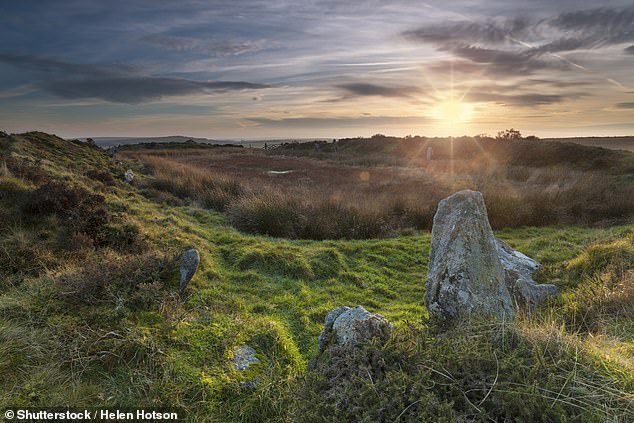
Experts say that no other site like King Arthur’s Hall from this period exists anywhere in Britain or Europe, making its original purpose a mystery.
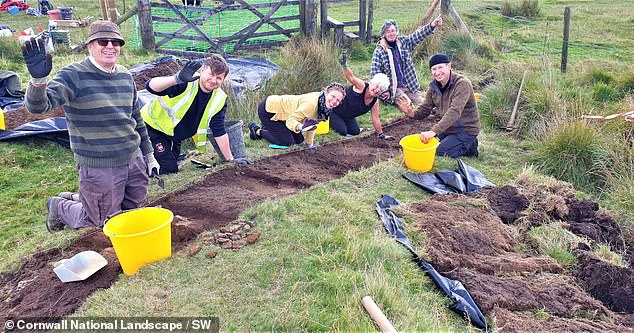
The researchers (pictured) hope that by providing an accurate date for the location, they can help unravel the mystery of why King Arthur’s Hall was built and what it was used for.
Some scientists suggest that the site may have been a gathering place used by ancient communities or that it could have had religious significance.
But without additional evidence or other comparison sites, it is simply impossible to know exactly what our Neolithic ancestors used King Arthur’s Hall for.
Mr Herring says: ‘We may assume that it was a sacred place, a place for gatherings, for rituals or ceremonies, but perhaps Neolithic people created and used it for very different purposes.’
To make matters even more challenging, the researchers also discovered that the site had been upgraded and expanded at several points in its history.
James Gossip, chief archaeologist at the Cornwall Archaeological Unit, says it may have been used as an animal pen or even a water reservoir during the Middle Ages.
However, the archaeologists working on the site remain confident that further research will unravel the mystery of King Arthur’s Hall and reveal more details about its history.
Mr Gossip added: ‘Knowing when King Arthur’s Hall was built can help us better understand this unique monument form, how it might have been used originally and how it might have been used over time.’
